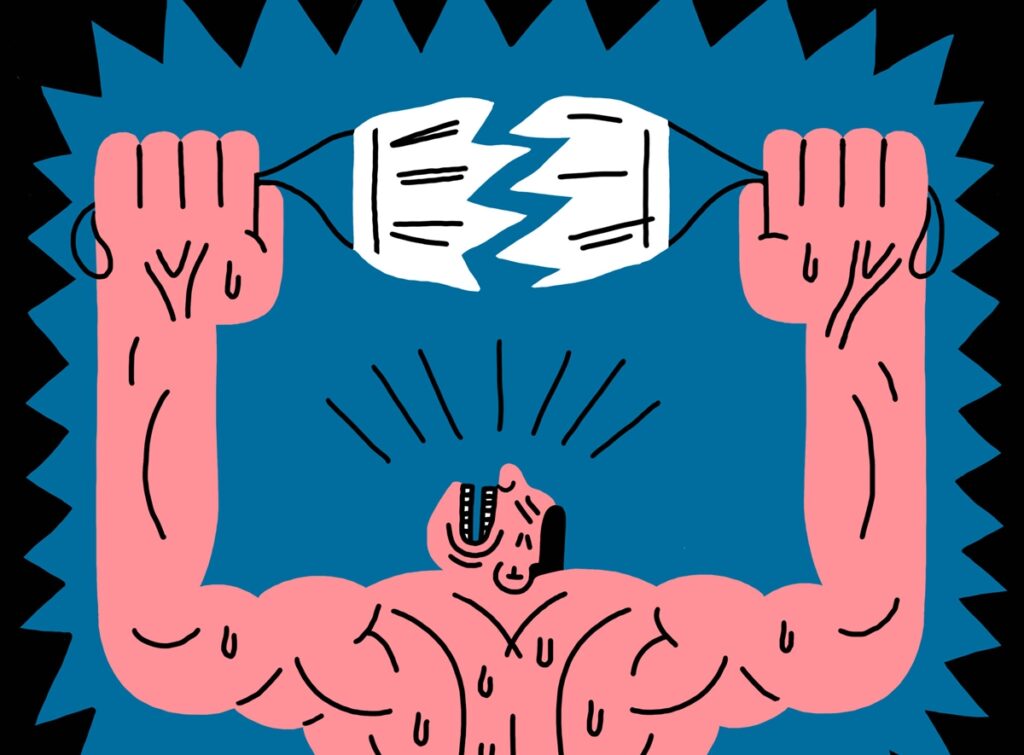Over the years, the term power, along with its definitions and connotations, has been contested, debated and discussed in great detail by academicians, researchers, policymakers and scholars from varying disciplines. Max Weber described power as ‘the probability that one actor within a social relationship will be in a position to carry out his own will despite resistance’. While theorising power, Michel Foucault wrote, ‘power is everywhere; not because it embraces everything, but because it comes from everywhere’.
Patriarchal power, particularly, is held together by an amalgamation of micro powers, which are manifested both as a cause and a consequence of the sexist oppression in our societies. As put forth by the Asian Pacific Institute on Gender Based Violence (APIGBV), ‘power sets the agenda for patriarchy’. The discourse surrounding patriarchal power and its presentation in our lives is essential. Ignoring it could mean ‘perpetuating the silence and powerlessness of those upon whom these disciplines have been imposed’. This article explores the theoretical base for power, especially its different manifestations in patriarchal societies across cultures.
Power, as a concept, has been explored widely by several feminist scholars. Liberal feminists have explored it as a positive resource that should be equally disseminated among the sexes. Radical feminists, on the other hand, discuss power under areas of superiority and subordination with references to a master and slave relationship. This claim was backed by different scholars, especially Carole Pateman, who wrote in 1988: ‘the patriarchal construction of the difference between masculinity and femininity is the political difference between freedom and subjection’.

Power, as a concept, has been explored widely by several feminist scholars. Liberal feminists have explored it as a positive resource that should be equally disseminated among the sexes. Radical feminists, on the other hand, discuss power under areas of superiority and subordination with references to a master and slave relationship. This claim was backed by different scholars, especially Carole Pateman, who wrote in 1988: ‘the patriarchal construction of the difference between masculinity and femininity is the political difference between freedom and subjection’.
Also read: Redefining Power: Women As Peace Operators
For socialist feminists, power emerged as something to be studied under the broad gambit of class exploitation. This approach has been critiqued by those who pointed towards an evident indifference towards gender in Marx’s theories. As a result, it has been counterargued that the Marxist breakdown of class subjugation is supported with a review of patriarchy done by radical feminists. Meanwhile, feminist literature revolving around intersectional approaches looks at the notions of power as something that must account for the numerous and traversing types of subjugations. The intersectional foundation proposes a multiple axis framework that can help bring in different contexts and locations for diverse people.
Power operates in different ways in our cultures and communities and different scholars have attempted to understand this. While literature and feminist approaches have varying views on how patriarchal power influences lives, it is necessary to note that there is no ‘correct’ way to understand this authority and control. Power exists in different forms; it is both internalised and institutionalised.
The different expressions of power shape the way women lead their lives. In fact, power is able to produce realities and ‘rituals of truth‘. Patriarchal power can be spotted easily across the various spheres of lives that people, especially women, lead. To borrow the analogy from the discipline of economics, this unseen power operates quite like the invisible hand, which plays a significant role in shaping the way people lead their lives. The notions of this power are so deeply embedded in our collective consciousness that ‘the disciplinarian is everyone and yet no one in particular‘. The ‘automatic functioning of power‘ is therefore secured by a situation of deliberate and endless clarity that has been instigated in most women. Despite the seemingly general subjugation of women, patriarchal powers emerge differently in different contexts and communities. From the choice of employment to fundamental bodily autonomy, this power is crucial in shaping the overall structure of cultures and communities. Literature shows how men exercise both personal and collective power over women- both through their roles as fathers and husbands and in public spaces. However, it would be unfair to argue that only men propagate the conditions that enable such powers or that it is only women who rebel against it. Patriarchal powers affect different groups of people differently. However, as Bartky highlights, despite the pressures faced by LGBTQ+ communities, lesbians are often confronted with double marginalisations as compared to gay men.
Identifying such power structures, their emergence, and influence is an important exercise to highlight the different subjugations people face in patriarchal societies. This acknowledgement of power imbalances can function as the first step to dismantle them and move towards the end of sexist oppression.
As a cis-gender woman from an upper caste, upper-class household, my lived experiences with patriarchy and power differ significantly from my comrades in different social locations. However, notwithstanding its different manifestations, this patriarchal power emerges across societies, communities and lives; while Dalit women in India are often at the receiving end of the majority of sexual violence, women in Japan were being kept out of medical schools by an administration who manipulates admissions. Even though cultures across the world vary significantly, sexist oppression remains constant.
Also read: A Study Of Patriarchy, Power & Abuse In Romantic Relationships
As mentioned earlier, identifying such power structures, their emergence, and influence is an important exercise to highlight the different subjugations people face in patriarchal societies. This acknowledgement of power imbalances can function as the first step to dismantle them and move towards the end of sexist oppression.
References
Allen, A. (2005). Feminist perspectives on power.
Bartky, S. L. (1997). Foucault, femininity, and the modernization of patriarchal power (pp. 92-111).
Bordo, S. (1993). Unbearable Weight: Feminism, Western Culture, and the Body, Berkeley, CA: University of California Press.
Foucault, M. (1976) The History of Sexuality. Vol. 1, The Will to Knowledge, trans. R. Hurley. London: Penguin.
Foucault, M. (1991). Discipline and Punish: the birth of a prison. London, Penguin.
Hartmann, H. (1980). The Unhappy Marriage of Marxism and Feminism: Toward a More Progressive Union. Lydia Sargent (ed.). Women and Revolution, Boston: South End Press.
Kruks, S. (2001). Retrieving Experience: Subjectivity and Recognition in Feminist Politics, Ithaca, NY: Cornell University Press.
MacKinnon, C. (1987). Feminism Unmodified: Discourses on Life and Law, Cambridge, MA: Harvard University Press.
Pateman, C. (1988). The Sexual Contract, Stanford: Stanford University Press.
Walby, S. (1990). From private to public patriarchy: the periodisation of British history. In Women’s studies international forum (Vol. 13, No. 1-2, pp. 91-104). Pergamon.
Muskan is a graduate student of Women’s Studies and works as an independent researcher. She believes a better world is coming. You can find her on Instagram, Linkedin and Twitter.
About the author(s)
Muskan is a socio-economic researcher interested in women studies. She is working as a Research Associate at a consultancy focusing on the informal economy. She believes a better world is coming.




